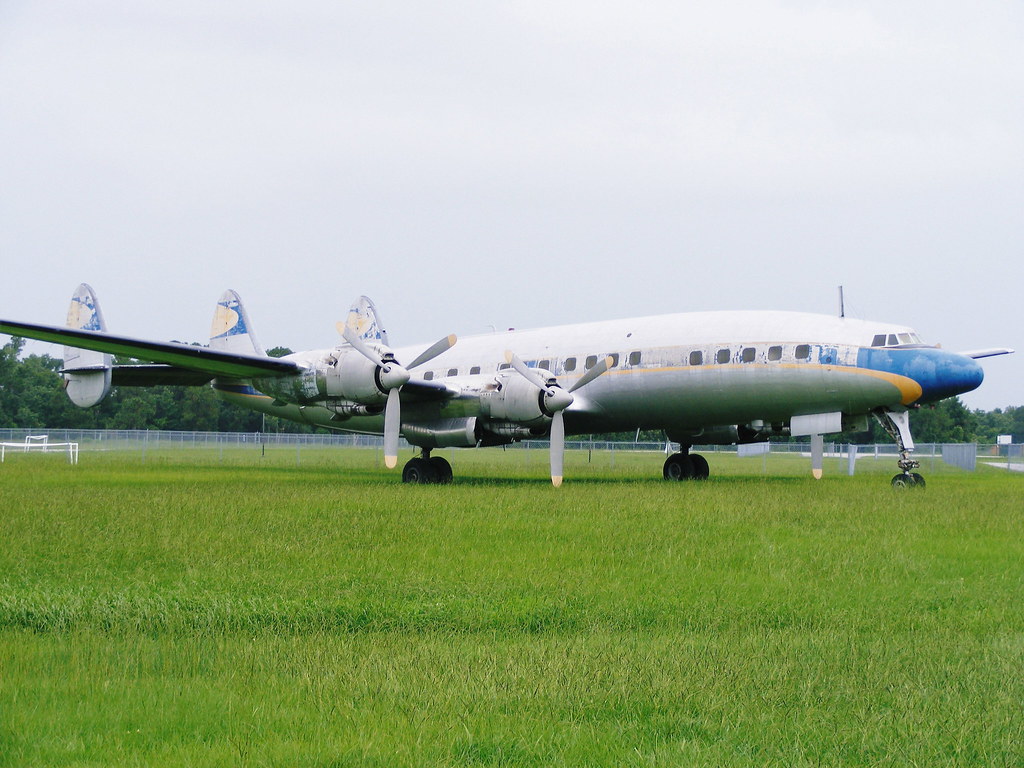
It was the 1940s, a pivotal decade in aviation history, that witnessed the ascendance of an aircraft which would mark a new chapter in commercial air travel—the Lockheed Constellation.

Affectionately dubbed “Connie,” this aircraft emerged from the exigencies of World War II to revolutionize the airline industry with its distinctive design, speed, and comfort.

The Constellation’s storied military career and subsequent commercial success offer a narrative of innovation that reshaped the skies.

All modern airliners owe a debt to the technological breakthroughs of the past, and the Constellation was a pioneer in this respect. Known for its iconic triple-tail design and dolphin-shaped fuselage, the Constellation boasted several features that were highly innovative for its time.

Most notably, it popularized the concept of cabin pressurization—allowing aircraft to fly comfortably at high altitudes above turbulent weather.

This technological marvel originally took flight in 1943 during the throes of the Second World War as the C-69, serving as a speedy transport for American forces. A story of American might and ingenuity, it was later converted into the Constellation model that the commercial flying public came to adore.

The Connie, carrying the spirit of its military service, became a symbol of progress. By the late 1940s, international carriers such as TWA, Pan Am, and Air France had integrated the Connie into their fleets, entrusting it with their most prestigious long-haul routes.

Its pressurized cabin transformed air travel into a far more pleasant experience than ever before. The days of air sickness and in-flight discomfort were numbered as the Constellation took passengers out of the turbulent “air sickness” zone, cruising smoothly in the jet streams.

This innovation was a game-changer for transatlantic travel. The L-049 model, capable of carrying over 18 tons, facilitated the first nonstop coast-to-coast flights in the United States, marking the beginning of a new era in air travel. The L-749 variant played a crucial yet indirect role in the Berlin Airlift, demonstrating its versatility beyond passenger transport.

The Constellation enjoyed widespread acclaim, with its top speed exceeding that of some World War II fighters. It was as fast as a fighter, they said, a remarkable achievement for a commercial airliner of its size and era.

However, the Constellation’s reign was not indefinite. The advent of the jet engine signified the end of an era. By 1958, the dawn of the Boeing 707 and other jetliners foretold a future where propeller-driven aircraft would soon become obsolescent.

Despite its eventual eclipse by the jet age, the Constellation’s legacy remains indelible. Its last scheduled passenger service was a flight between Philadelphia and Kansas City in 1967.

Yet, the fascination with the Constellation endures among aviation enthusiasts. Museums across the globe continue to preserve the memory of this legendary aircraft, which remains a testament to the transformative power of innovation.

The Lockheed Constellation is more than an artifact of aviation history; it is a symbol of a period when travel by air transitioned from the arduous to the comfortable, from the inaccessible to the democratic. Its tale—interwoven with technological prowess, wartime service, and commercial success—reflects the timeless human endeavor to conquer the skies.

The Connie, with its unmistakable profile against the horizon, will forever be remembered as a trailblazer that changed the way we experience the world above the clouds.
Relevant articles:
– What Made The Lockheed Constellation Such A Unique Development For Aviation, SlashGear
– The Lockheed Constellation – The Plane That Changed The World, Simple Flying
– The Lockheed Constellation Revolutionized Air Travel, Now There Are Just Two Working Ones Left, The Autopian
– Lockheed 1049F-55-96, “Constellation”, Smithsonian Institution

